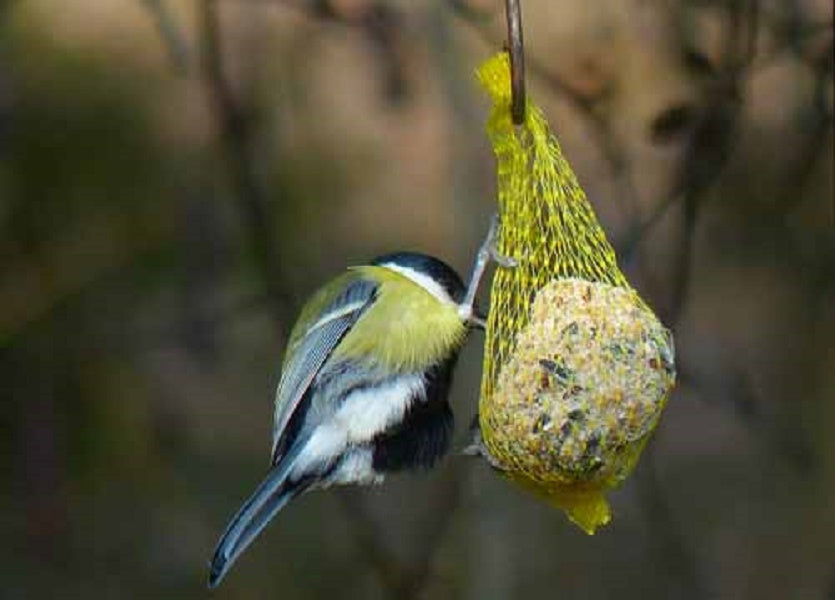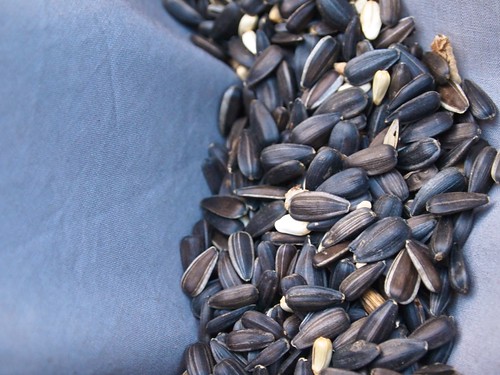
Making Fat Balls to feed birds in Winter
Users of our popular bird nesting box cameras often ask us how to set up their bird boxes in a way that will guarantee usage and residents. One sure fire way to encourage bids to visit your garden is to have a feeder out throughout the year to provide them with a source of food. At no time is this more important than in the lean Winter months and during cold spells like now, when foraged food is scarce and the colder temperatures mean the birds need to load themselves up with calories in order to replace this lost energy. Because of this, one of the best ways to help out the wildlife in your garden is to put out Fat Balls to feed birds over the coming months.

Fat Balls are made by collecting a wide variety of traditional bird foods such as seeds, fruit and grain, and bonding them together into a block using saturated fats. The birds can pick at the ball and eat the seeds and fat, giving them a high-calorie boost to provide extra energy for activities in the cold. You can buy them from any good pet or garden shop, often inside of pre-made feeders, but did you also know that they’re simple to make yourself? This quick recipe is easy to adapt for different species of bird, and different size balls…
Ingredients
- Hard Animal Fat– Solid fats such as Lard or Suet is essentially the only option for making a fat cake to feed birds. Don’t worry about counting calories, the birds want those saturated fats for energy!
-
Seed Mixes– Any commercially available bird seed mix can be included inside the mixture. If you are looking to encourage visits by a particular species of bird, then changing the seed mix is a great way of doing this. For example you can include Millet seeds for Sparrows & Finches, flaked Maize for Black Birds, or Sunflower Seeds for Tits. Of course, if you don’t want to experiment with this then it’s easy to find seed mixes ready tailored for specific species.

image via - Peanuts– Always a favourite for birds, it’s best to crush them up into smaller pieces to make the more managable and of course make sure you only ever unsalted nuts!
- Mealworms– Dried mealworms can be purchased from pet supply shops, and are a great way to attract insect eating birds such as Robins and Wagtails.
- Kitchen Scraps– Starchy leftovers such as cooked rice, potatoes and breadcrumbs are also great to add, but nothing too salty (see below).
Things to avoid
- Fats used for Cooking– After roasting a nice slab of pork belly, it can be tempting to use the rendered down pork fat for bird food, but this is not advisable, as the juices that get added to it during roasting can clog up their feathers, and also make it far too salty.
- Butter or Margarine– Unlike the harder animal fats, these types are simply to oily for birds, and can ruin their feathers
- Spoiled Food– Whilst some kinds of mould aren’t a problem, any rotten food can cause the same health problems in birds that it can cause in humans!
- Salty Foods– Birds’ metabolism cannot handle salt, so any heavily seasoned foods like bacon or ham should be avoided, as it can be harmful to them
Making the Fat Balls
Preparing them is simple! Just take one part fat to two parts dried food mix. Melt the fat in a pan, and pour over the dried mix in a bowl or tray, then combine them so the fat is evenly distributed. Before the mixture hardens, pour it into the container you want to shape the block- an empty yoghurt cup is one of the most popular moulds. Just make sure you add a loop of string to the container first so when it is full you have something to hang it from. Alternatively, simply form the mixture into balls around string. Once it is thoroughly cooled down and the fat has hardened, hey presto- it’s ready to hang up to feed your feathered visitors!

